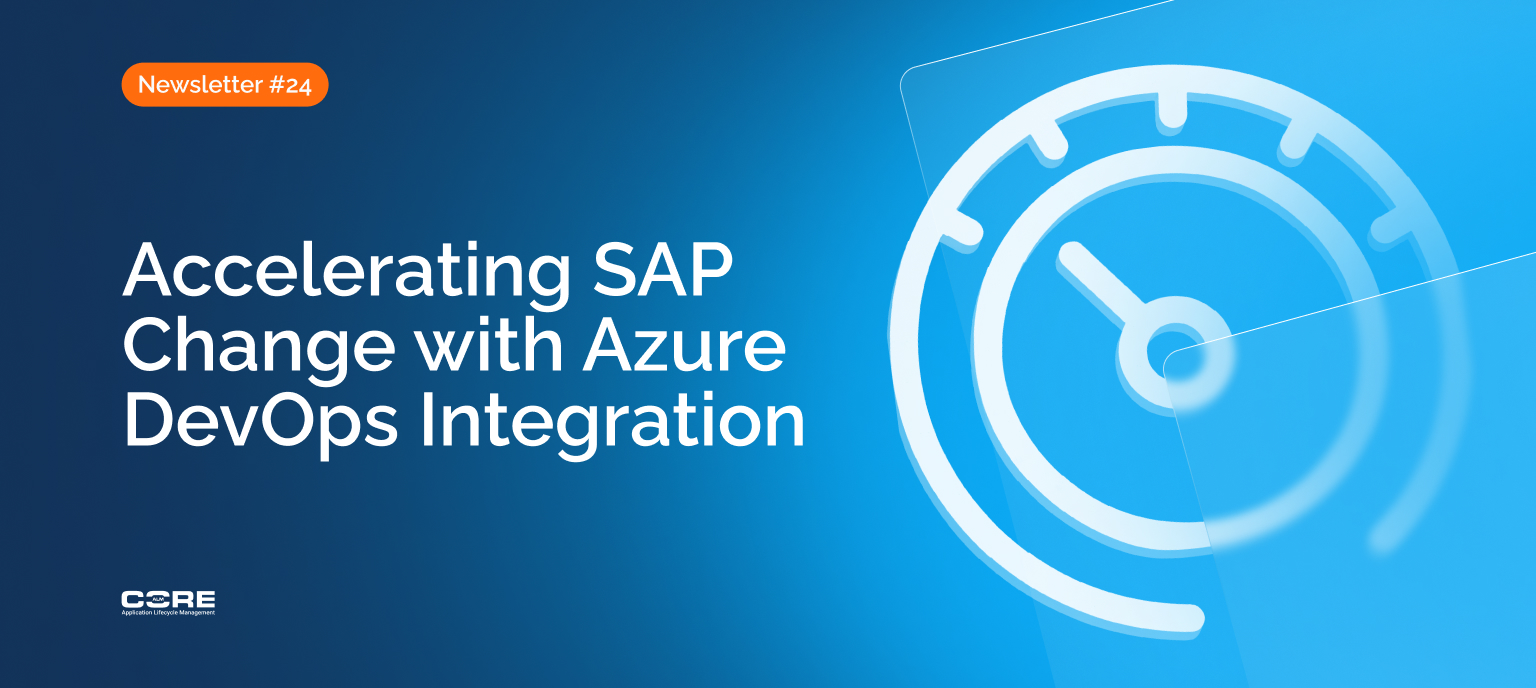Introduction
The DevOps pipeline only accelerates your enterprise if SAP can keep up.
Across many modern IT organizations, Azure DevOps has become the system that keeps delivery work aligned. It guides planning, development, testing, and release for cloud applications, integration services, and even extensions in SAP BTP. User stories move smoothly from backlog refinement into development, and automated pipelines validate quality before code even reaches QA. This creates a fast, predictable, and highly visible delivery rhythm.
Some SAP teams have adopted Azure DevOps for project planning. Business analysts write acceptance criteria in Azure DevOps, developers update work items through sprints, and testers prepare for QA using the same shared backlog. On the surface, it looks as though SAP work follows the same flow as the rest of the enterprise.
But when the time comes to move SAP changes forward, the process breaks. Azure DevOps works beautifully for languages like Node, Java, Python, and .Net because code can be linked to user stories and delivered through automated pipelines. SAP development, however, requires transports, which exist outside Azure DevOps and are often managed manually or with other tools. This gap slows down integrated testing and prevents SAP from moving with the enterprise DevOps pipeline.
The DevOps pipeline only accelerates your enterprise if SAP can keep up.
Where Azure DevOps Already Excels
Modern applications move continuously because DevOps links the story, the code, and the pipeline.
For most non-SAP applications, Azure DevOps connects the entire lifecycle. Teams can move from idea to deployment in a matter of hours or days because every artifact in the delivery pipeline is connected. The system knows exactly what is ready for QA because pipelines validate that the code, dependencies, and tests are complete. This predictability is what allows teams to run fast, integrated release cycles.
This workflow supports everything from cloud-native microservices to integration APIs and SAP BTP applications. At the end of each sprint, Azure DevOps automatically builds, validates, and promotes the code to the QA environment, ensuring that every component needed for integration testing is already synchronized and ready to run.
Modern applications move continuously because DevOps links the story, the code, and the pipeline.
Where SAP Breaks the DevOps Flow
SAP work often starts in Azure DevOps, but it does not stay there.
Some SAP teams write user stories, define requirements, and track development tasks directly in Azure DevOps. This helps create alignment during design and early development, but the break happens as soon as SAP work must move to QA.
In SAP, both code changes and configuration adjustments must be packaged into transport requests. Functional teams make configuration changes, security teams adjust roles, ABAP developers write enhancements, and integration specialists update mappings. None of these changes are linked to user stories or pushed through an automated pipeline. Every object must be assigned to a transport inside the SAP system and moved manually through the landscape.
Because SAP transports are not created or tracked within Azure DevOps, the real delivery work falls outside the DevOps process.
This leads to the following:
- User stories look complete in Azure DevOps while SAP transports still sit in development.
- Testers prepare QA cycles without having the SAP components they need.
- Product owners review sprint demos based on incomplete system changes.
- End-to-end test environments remain out of sync because SAP changes arrive late.
Non-SAP components reach QA rapidly through automated pipelines, but SAP changes wait on manual steps, and resolution of transport conflicts and errors. As a result, integrated testing cannot begin when planned, even though Azure DevOps shows everything as ready.
This single bottleneck slows down the entire business process flow whenever SAP core changes, especially in environments where SAP plays a central role.
SAP work often starts in Azure DevOps, but it does not stay there.
Bringing SAP Back Into the Azure DevOps Flow
To accelerate SAP, the work must stay inside Azure DevOps from design to deployment.
The solution is to make SAP a full participant in the DevOps lifecycle by managing SAP transport management directly in Azure DevOps.
CoreALM’s SAP Transport Management for Azure DevOps enables SAP developers to create transport requests and attach them to their Azure DevOps work items. Controls in ADO allow authorized users to import those transports to QA. This way, the status of those ADO work items will truly reflect the readiness of those changes for testing.
This alignment solves the biggest SAP bottleneck:
- SAP readiness becomes visible early.
- Automated transport management features eliminate common errors.
- And-to-end testing begins on schedule.
By synchronizing SAP with the Azure DevOps pipeline, the entire release cycle accelerates because every system in the process reaches QA at the same time.
To accelerate SAP, the work must stay inside Azure DevOps from design to deployment.
Conclusion: Fast SAP Delivery Begins With End-to-End Integration
Azure DevOps accelerates delivery for every modern application. SAP should not be the exception. When SAP development and transport management stay inside Azure DevOps, teams achieve real end-to-end visibility, faster QA readiness, and shorter release cycles.
By combining Azure DevOps with CoreALM integration capabilities, organizations create a unified lifecycle where every change, SAP or non-SAP, follows the same transparent, predictable flow. This improves delivery speed, supports clean core SAP practices, and unlocks real DevOps acceleration across the enterprise.
SAP can move as fast as the rest of your digital landscape. It just needs to be integrated into the pipeline.




